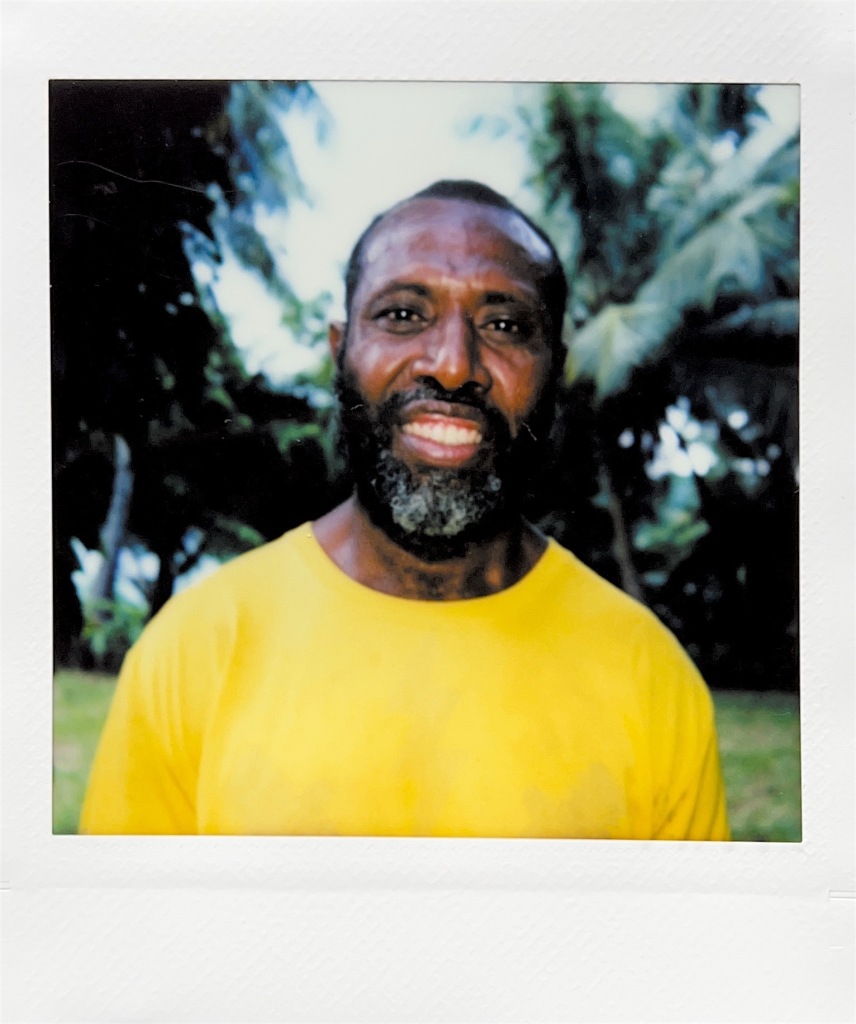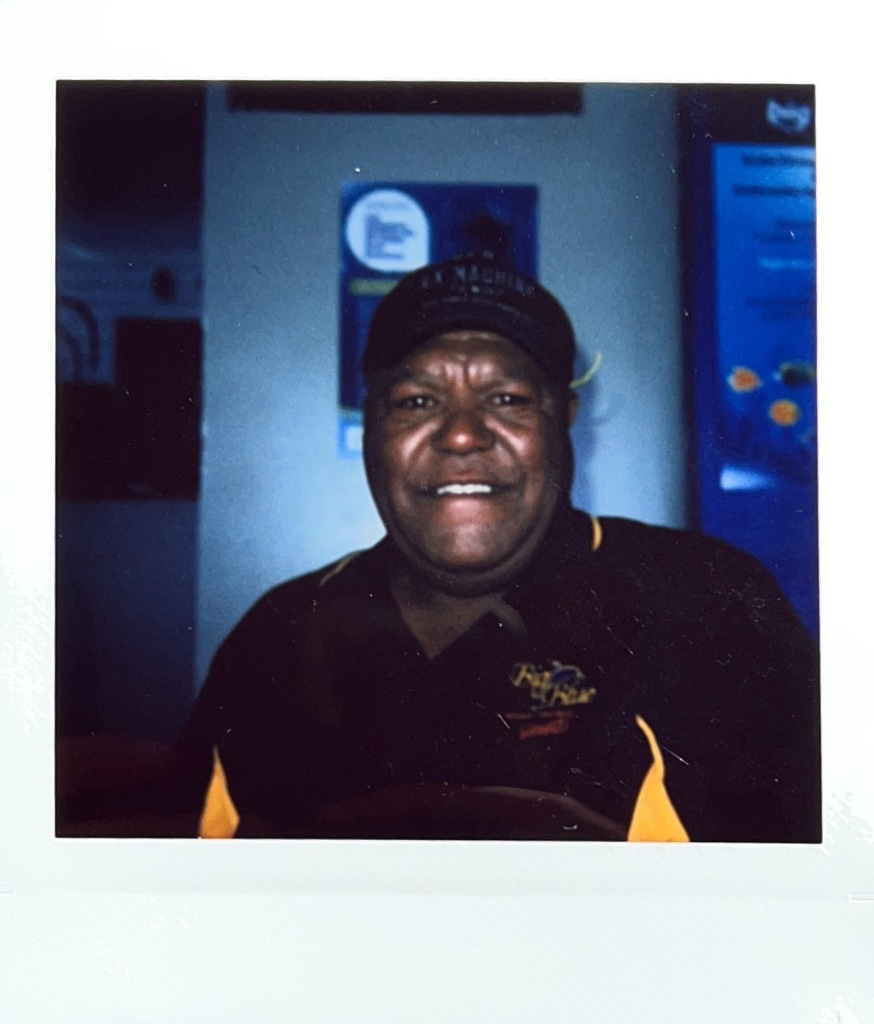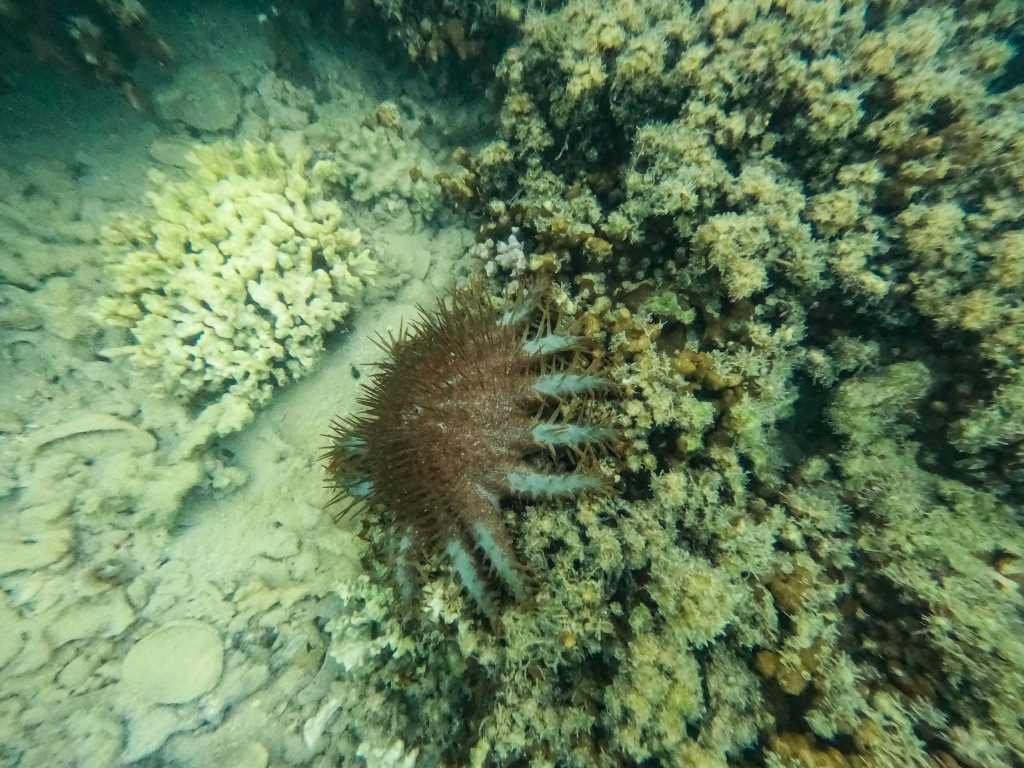For the most disaster prone country in the pacific, climate change has a vast and visible impact on the coastal communities in Vanuatu. Living off the land and utilising natural resources is common practise in Vanuatu. Coastal communities rely on the marine biodiversity in the waters that surround their tribal lands to provide sources of food and enrich their connection to culture. These ecosystems are the first to experience the direct impacts of climate change through storm surges, rising sea levels and changing acidity levels in the ocean. The effects are devastating to Ni-Vanuatu communities and their livelihoods, which depend on the ocean for survival. This investigation will focus on the marine dugongs and turtles in Vanuatu and the importance of their conservation for Ni-Vanuatu people. In researching and gaining interviews for this piece, an intersectional approach was taken to investigate the nuances of climate, culture and science and showcase the way in which these three sectors interact.
To understand conservation efforts in Vanuatu, it is important to first understand the cultural significance of this species, how they live and why they are threatened. Dugongs and Green Sea Turtles in Vanuatu are considered an endangered species, listed as ‘vulnerable’ under the International Union for Conservation of Nature (IUCN) Red List of Endangered Species. I sat down with Werry Narua in Port Resolution, Tanna island in the Tafea Provenance to discuss the relation between culture and these marine species. Werry Narua is the man behind the Port Resolution Yacht Club and Bungalows, a Yacht and remote tourist location. The area is situated on a cliff overlooking a bay, which the surrounding tribes rely on for food, culture and lifestyle. The Yacht Club was founded by money generated from tourists, who would visit to see a dugong they called ‘The King.’

There are no longer any Dugongs in the bay in Port Resolution, as it no longer has the adequate seagrass beds to sustain them. The biodiversity that seagrass beds create, makes their destruction from strong weather events even more damaging to this culture.
“These two mammals are very important in traditional culture. Turtles become a special food for a chiefly tribe,” said Narua.
“Climate change is affecting the system of our culture so if there is no turtle the chief wouldn’t be able to eat the head and the reproductive system.”
This community and many alike, still utilise traditional customs in modernised form. Chief ceremonies and rituals were once accompanied by cannibalistic sacrifices. The last cannibal killing in Vanuatu was in 1969, and since then turtles have become the symbolic representation of this in modern ceremony. The killing of a turtle is a sacred ritual that is done intentionally and consciously in these tribes with strict regulation. In order to maintain turtle and fish populations through the year, there are certain harvesting times when they are allowed to fish – enacting a form of sustainable fishing.
“In our traditional calendar, we have months where we are allowed to go fishing and we try to control the resources to make sure we help them grow. The turtles we use for traditional practices are of a good size, we discourage people from harvesting small turtles.” Said Narua.
It is important to understand the nuances of this activity and its significance to this community to recognise how the decline in turtle populations can alienate this community from their traditions. Recognising that the practises bring a sense of land, spirit and ancestry connection to these tribes.
Climate Change remains a leading cause responsible for the reduction in numbers of wild dugongs and turtles. Dugongs and turtles are herbivores and consume a diet of predominantly seagrass, which is largely affected by climate change in coastal waters. Storm systems and tropical cyclones that are frequent and becoming more consistent have led to the destruction of seagrass beds, which exist in shallow tidal zones. Seagrass is a delicate species and relies on direct and constant sunlight to perform photosynthesis. This process becomes difficult when coastal erosion moves sediment into the waterways, creating cloudiness in the water turbidity and preventing necessary sunlight from reaching the seagrass beds. Speaking to Biologist and Vanuatu Environmental Science Society [VESS] volunteer Martika Tahi the link was made clearer.

“Last year and this year we had a La Niña season, so more rainfall and more runoff to the ocean which can affect the seagrass beds that need sunlight to grow, if the water is not clear they won’t grow,” said Tahi.
“Just last week we [VESS] did a seagrass survey in North Efate and we’ve noticed some changes in the coastline. Two years ago there wasn’t any sand spit but when we went last week there was a large area of sand that was deposited near the seagrass bed. This happened because of the storm surges we had months earlier”.
The change in coastal landscape and increased coastal erosion, has left many seagrass beds buried. Without a food source from shallow seagrass beds, dugongs, fish and turtles alike are forced out of their natural habitat and have a higher likelihood of being injured by man-made instruments such as boats, fishing gill nets and propellers. While not a current problem visible through in-field research, it could be assumed that rising sea levels will also begin to detrimentally affect seagrass in the next decade. Seagrass relies on shallow waters and direct access to sunlight. The greater the water depth, the more difficult it is to receive adequate sunlight. As the temperatures continue to rise and melting ice from the polar regions disperses, the pacific region will see islands shrink and erosion worsen.
In response to the threat from climate change, communities are preparing and becoming informed on the ways in which they can protect seagrass and marine ecosystems in their tribal areas. Martika and the VESS team are educating and providing information to tribes on how to conserve the vulnerable turtles and dugongs and sustainable utilise the seagrass beds. The aim is to collate scientific information and research conducted into accessible booklets and information materials that are not complex and can be understood easily.
“We’ve gone around the communities raising awareness about the dugongs and other marine species to increase the knowledge on the biology and the threats dugongs are facing”
“We go and help them but we don’t take over, we give them the information, we encourage them to protect the threatened species and they use those tools to take care of their area and the threatened species in it.”
In relation to dugongs, their aim is to educate people on why the dugong is important to their fishing practices and livelihoods – to present a holistic view on what could occur if the dugongs or seagrass was to be completely destroyed in their tribal waters. This method of educating communities is undergone to give autonomy to communities, as land is owned individually by tribes, not the government.
“It has improved the knowledge of people and when they know there is an endemic species in their area they take pride and want to do something to protect the species.”
“They know that we are depleting the resources and need to start protecting them, because populations are going down especially with the fish.”
When large weather systems occur in Vanuatu, there is another reef threat that appears. The crown of thorns starfish is an invasive species that is detrimental to the reef and coastal ecosystems. Unlike the seagrass beds, when La Niña weather systems batter the coastline and result in erosion, the crown of thorns starfish larva actually thrive. While the seagrasses become buried in the coral reefs after erosion, phytoplankton are provided with rich nutrient sources from the soil runoff, which are the food source for COTS larva. This is proving difficult for both biodiversity in the marine ecosystems, but tourism suffers as a result, as adult COTS feed on coral. In response to this threat, grassroots diving efforts have been put in place, alongside Big Blue Scuba Dive. Mele Bay in Efate has seen outbreaks of these starfish in recent years, which is detrimental for the tourism scuba activities that Big Blue conducts. As a result, local ni-Vanuatu divers have been employed under VESS with the assistance from the Vanuatu Scuba Operators Association and the New Zealand and British High Commission in Vanuatu. Speaking to a local Mele Dive Master, Luaky Nabanga, he says there are many techniques used by locals to kill the COTS, including using a wire, collecting them in a bag and drying them out and the use of a vinegar or salt solution.

“We use vinegar to inject the crown of thorns and kill them, but there are still many in Mele Bay”
In some communities Luaky discussed that the crown of thorns are utilised in a unique way on Pele Island. Thus showing the adaptive advantage of traditional local communities and their unique methods. If collected and dried out in the sun, the remaining carcass of a crown of thorns has a unique usage in some communities.
“In Pele, they would use crown of thorns as compost, by drying it up and then crushing it all up to mix it with soil and use it as fertiliser”

In turn, while there are plenty of grassroots efforts being undertaken to maintain coastal ecosystems and marine life, there is no way to stop the inevitable impact that climate change will have on the future of these small islands who contribute such small emission levels. Both the VESS team and the Live Learn team aim to educate before intervening. They are responsible for providing support and a toolkit of materials for communities actively wanting to restore and sustain their marine environments and biodiversity. It remains the communities responsibility to utilise the newfound knowledge and resources at their disposal to maintain the environment. If there is no change and no maintenance, the effects of climate change will only worsen, but tribes without sustainable fishing and food sourcing practises in place will struggle to adapt. Young people like Martika Tahi are the future of Vanuatu and are the future climate voices that have the knowledge and lived experience to understand the visible effects already occurring on the island.
